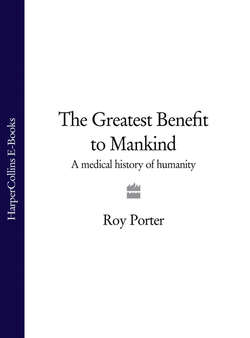Читать книгу The Greatest Benefit to Mankind: A Medical History of Humanity - Roy Porter - Страница 12
PLAGUE
ОглавлениеBubonic plague is basically a rodent problem. It strikes humans when infected fleas, failing to find a living rat once a rat host has been killed, pick a human instead. When the flea bites its new host, the bacillus enters the bloodstream. Filtered through the nearest lymph node, it leads to the characteristic swelling (bubo) in the neck, groin or armpit. Bubonic plague rapidly kills up to two-thirds of those infected. There are two other even more fatal forms: septicaemic and, deadliest of all, pneumonic plague, which doesn’t even need an insect vector, spreading from person to person directly via the breath.
The first documented bubonic plague outbreak occurred, predictably enough, in the Roman empire. The plague of Justinian originated in Egypt in AD 540; two years later it devastated Constantinople, going on to massacre up to a quarter of the eastern Mediterranean population, before spreading to western Europe and ricocheting around the Mediterranean for the next two centuries. Panic, disorder and murder reigned in the streets of Constantinople, wrote the historian Procopius: up to 10,000 people died each day, until there was no place to put the corpses. When this bout of plague ended, 40 per cent of the city’s population was dead.
It was the subsequent plague cycle, however, which made the greatest impact. Towards 1300 the Black Death began to rampage through Asia before sweeping westwards through the Middle East to North Africa and Europe. Between 1346 and 1350 Europe alone lost perhaps twenty million to the disease. And this pandemic was just the first wave of a bubonic pestilence that raged until about 1800 (see Chapter 5).
Trade, war and empire have always sped disease transmission between populations, a dramatic instance being offered by early modern Spain. The cosmopolitan Iberians became subjects of a natural Darwinian experiment, for their Atlantic and Mediterranean seaports served as clearing-houses for swarms of diseases converging from Africa, Asia and the Americas. Survival in this hazardous environment necessitated becoming hyper-immune, weathering a hail of childhood diseases – smallpox, measles, diphtheria, gastrointestinal infections and other afflictions rare today in the West. The Spanish conquistadores who invaded the Americas were, by consequence, immunological supermen, infinitely more deadly than ‘typhoid Mary’; disease gave them a fatal superiority over the defenceless native populations they invaded.
